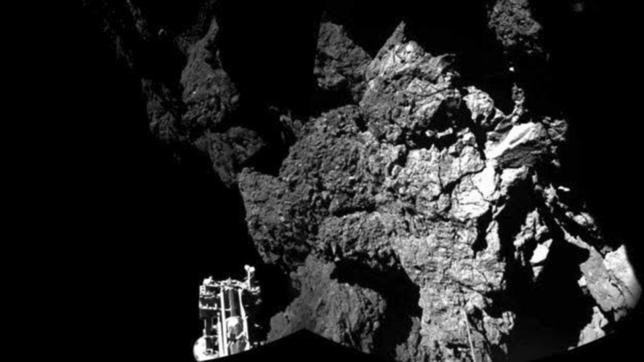Philae lander is likely to be the bright spot the European Space Agency's (ESA) Rosetta spacecraft indicated, ESA scientists believe. The Rosetta team presume the bright dot in a landscape of crenulated rocks to be the little comet lander lost since November 12, 2014.
Previously, Philae lander had a landing on the Comet 67P/Churyumov-Geerasimenko. Before collapsing because of lack of battery power, it was able to rapidly scan its environment and help the scientists.
First, Philae lander touched down at the Agilkia landing site but the harpoons designed to secure it to the surface and the ice screws did not work. Before settling down at a site called Abydos a kilometer from its intended landing site, the lander bounced and sailed above the nucleus of the comet for two hours, according to Universe Today.
After a series of unfavorable events during the scheduled landing on the surface of the Comet 67P/Churyumov-Geerasimenko, the Rosetta and Philae teams have worked together with determination to piece together clues and search for the lander.
The scientists now hope that they can find Philae lander in its frosty territory with the latest analysis of imagery from the Rosetta.
According to German Space Agency lander manager Stephan Ulamec, Philae lander should be around twice three or thrice three pixels with the perfect illumination and a 20km altitude and going by the images after the landing, which are the best so far.
Because the bright spot is not quite distinct, finding the Philae lander is not without any problem. It is then assumed that a sort of a shadowing effect is camouflaging the lander, according to The Times Gazette.



























